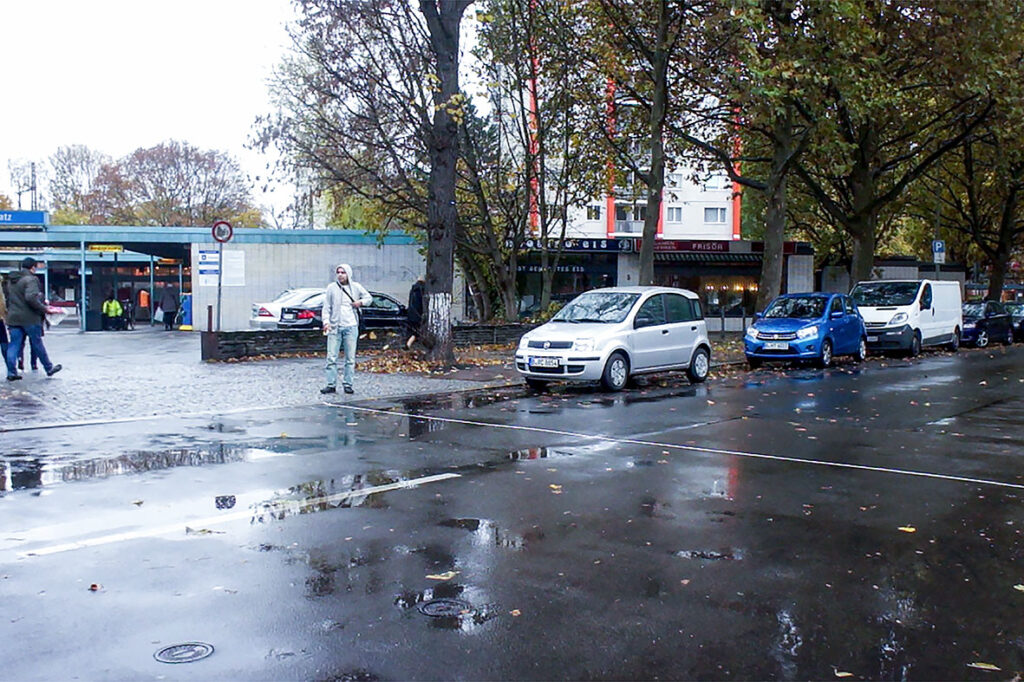
Lines
Institut für Alles Mögliche
Berlin, Germany, November 2016
The Lines project is an exploration of memories within the city of Berlin. There were project locations situated in six districts across the city, beginning with two sites specifically linked to the Berlin Wall; four additional sites were then chosen through an intuitive, on-the-spot process. By connecting these points, a shape on the map emerged, tracing a symbolic journey. Each location served as a canvas for a one-time performance: dragging paper tape along the ground to delineate borders and pathways. This action symbolized a way to transcend historical events and evoke memories, engaging with the physical and conceptual boundaries that shape our understanding of space. Therefore, the project explored the intersection of history and personal experience of the surroundings. It also navigates how lines, both physical and metaphorical, can divide and create new surfaces, influencing our perception of being in an environment.


Berlin map and punctuation of the project spots.
Two dots need a connecting path to become a line. Time, like a chain, has its own way of weaving these lines together. Some lines become attached to time, vulnerable to the effects of cloudy weather. Silence and negotiation can also bring an end to these lines. When the weather cools, the lines extend, and the darkening of colors and changes in brightness become invitations to watch one of these lines burn away. Clouds slowly drift by the line with ease, as the first dot struggles to appear. Another line has taken shape in my mind, splitting into one thing while letting go of another.
The vertical line seems unbreakable, towering high. Engaged with it as I sit at the side, I hope this silence won’t last long. I have a little doubt that its color is red. Also, there are some fast-paced beats that gradually slow down with time. My eyes are getting lighter in weight. I remember an old question, a simple one, although long. I don’t like to forget the vertical line; it is infinite. I see, my eyes remember that, but the mind sometimes takes distance from that remembrance. So many bright patches of light dot the ground to accompany the sound of treading on the leaves.
Lines can both divide and create a new surface. Their dividing feature comes from their subjective side, and the creative feature comes from their objective side. Here, both situations are considered. History, walls, Berlin, and my mind are all involved with this line’s shape. Each line has a path for appearing and attaching separated dots and then experiencing motion. This path can make angles with the created surfaces. While the game is about the surfaces, the concept of dimension can also be involved. The project Lines is the interpretation of this movement. Now, the presenting dot, the outcome of the last dot in its angle and axis, is the point for marking. This dot has no specific height but has a critical dimension which can be controlled by a stable point of view.





